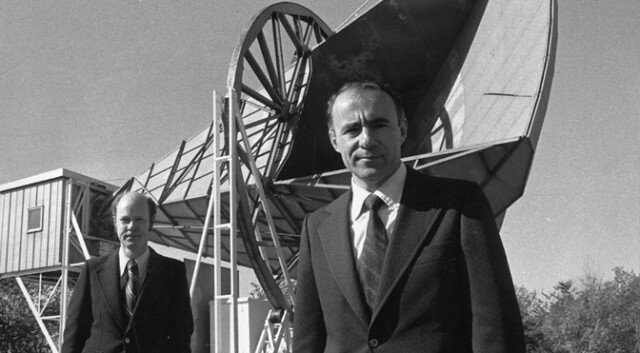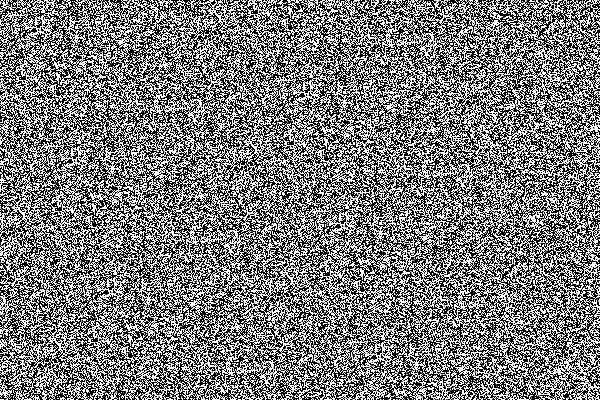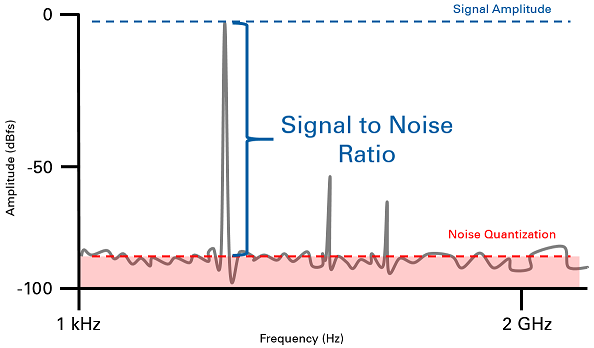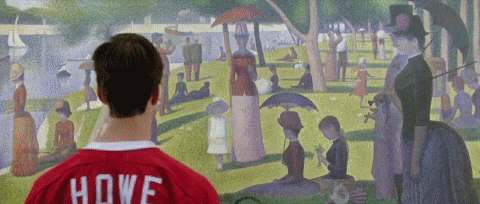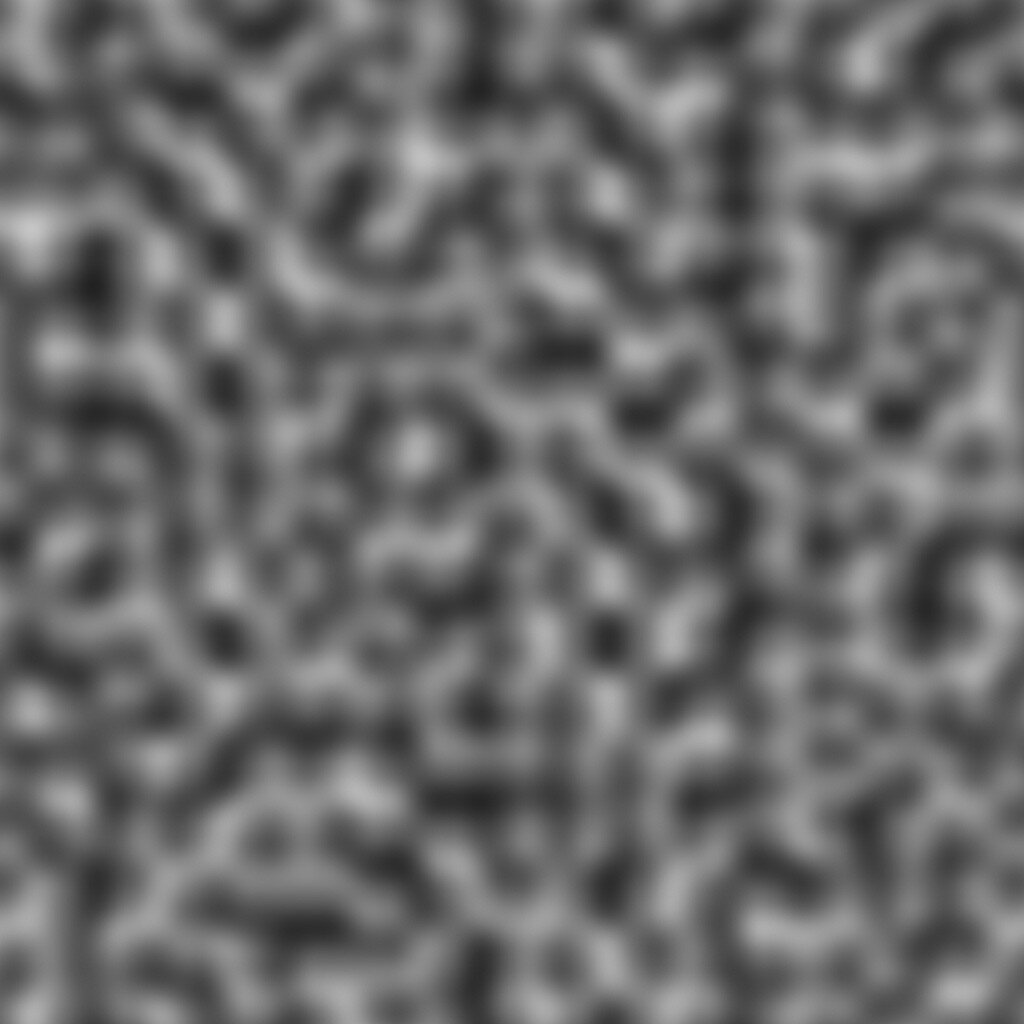Written by: Zachary Halberd
Approximately ten seconds after the Big Bang birthed our reality, experts tell us that the universe was dominated by a single form of energy: the photon. This period, known as the Photon Epoch, lasted about 370,000 years until the universe cooled to a temperature which allowed for atomic nuclei and electrons to combine. The great Recombination of what we now call matter began to starve the photons of their rule by removing their ability to interact energetically with electrons and protons. As an isotropic fog of nuclei and electrons began to congeal into matter, the entire universe finally became transparent. Though photons had lost their source of high energy, they were now free to travel the infinite expanse for the remainder of time.
On May 20th, 1964 radio astronomers Robert Wilson and Arno Penzias were conducting an experiment with Bell Laboratories on a hilltop in New Jersey. Their instruments had been specifically designed to eliminate as much electromagnetic interference and noise as possible such as other radio signals, power lines, and even microwave ovens and medical equipment. In order to conduct the first experiment involving human voice transmission through space to another location on Earth, it was critical for the research team to be able to separate a voice signal from the noise coming from the world around them. It was the first satellite telecommunications system in human history and there were many telecommunications companies both at home and abroad that had an interest in the experiment’s success. Telephone communications systems were being installed in nearly every country in the world, and not unlike the birth of the internet several decades later, new markets were waiting to thrive on humanity’s desire for instantaneous global communication and information.
Wilson and Penzias, 1965
However, during the experiment Wilson and Penzias noticed something strange. After installing the world’s most sensitive radio receiver specifically designed to remove almost all noise, there was still a consistent random noise present in the instrument. The research team submerged their receiver in liquid helium in order to bring it down to near absolute zero and eliminate thermal noise. They constructed a special horn antenna that was designed to mask out human-generated electromagnetic interference. They even placed the antenna on top of a hill in a remote area, but the noise was still present. In what would eventually become a Nobel Prize discovery on the nature of the cosmos, Wilson and Penzias determined that the noise was, in fact, the ancient remnants of the electromagnetic energy released during the Big Bang. Scientists now call this the Cosmic Microwave Background Radiation (CMBR). This relic radiation is all around us and permeates through us. If the universe were a colossal gong, the CMBR would be the veritable electromagnetic tone after the strike of the Big Bang itself still resonating and giving humanity the opportunity to listen and record it for analysis. Sadly, our universe is expanding and as the fabric of reality dilates, so does the wavelength of these primordial photons. The wavelength of a photon’s propagation is inversely proportional to it’s energy, so over time the tone of our cosmic birth will grow so faint that it will be lost forever.
Signals from Outer Space
Most of you who are reading this article are likely to have been around when the United States switched off analogue television broadcasting in the summer of 2009. The great migration to digital cut most of us off from daily interaction with cosmic noise as advanced appliances began to use sophisticated methods of filtering out unwanted interference. When we switched off analogue television and radio, we effectively ended an era of household radio-telescopes. If you have the urge to witness this cosmic cacophony yourself, you may want to pick up an old analogue television and turn it on. To the unfamiliar, the static that ensues will most certainly be a bizarre sight. In America some might call this the “snow” effect. The Danish call this visual noise “war of the ants”. The Indonesians call it “ant soccer” and some further East call them “fleas”.
Typical noise pattern of an analogue television channel
Once society began to digitize, we became obsessed with clean video and audio signals. CDs, DVDs, and MP3 files were marketed as flawless digital facsimiles of live and studio recordings from our favorite artists. Today, video has become clean and crisp as has photo and audio. Higher resolution digital formats requiring more complex noise reduction algorithms have driven market standards and have become our default mode for viewing and listening. Camera manufacturers have poured billions of dollars into higher resolution formats and the war against noise. The digital imaging processor has come a long way since it’s mainstream debut in the early 2000s having been developed, in part, to parse unwanted noise from a recorded image. Although the vast majority of this noise is due to thermal radiation and human generated electromagnetism from other electronics, about 1% of this persistent nuisance is from CMBR. The technical definition of a signal is: “a function that conveys information about a phenomenon.” In other words, a signal is information that we’re able to extract from random chaos. The quality of a signal vs the noise that it must contend with is known as the signal to noise ratio (SNR). As our species continues to expand its electromagnetic footprint, video equipment manufacturers have been locked in an arms race against our own planetary background radiation. If we could actually listen to electromagnetic radiation here on earth with unaided ears, this little blue marble that we live on would sound like the Yankees stadium during the World Series. Even in the most remote regions on Earth one can turn on a radio and hear the snap and crackle of a radio wave.
Example of a signal standing above the “noise floor” (noise highlighted in red)
Sleight of Hand
It’s somehow comforting to know that something as awesome as the birth of our universe plays a daily role in my life and work. As a colorist for film and television, I work closely with digital video down to the pixel level on a daily basis. I’m often working at high magnifications, deep within the smaller sectors of a video frame in order to diagnose issues like chromatic noise (yes, noise comes in different colors!), color cast, macro blocking from compression, dead pixels, banding, moire, and other strange and wonderful phenomena. Living this closely to the image, I can get a much better sense of a camera’s personality. Over the years, I’ve come to fall in love with digital video and all of its flaws, video noise notwithstanding. Working for years at high magnification of a video frame has given me a much better appreciation for the scientific and engineering challenges that digital imaging experts have managed to overcome or, more importantly, circumvent. Every digital camera in the world, regardless of price or sophistication, exhibits the same characteristic: trickery.
Consider Georges Seurat’s pointillist masterpiece A Sunday Afternoon on the Island of La Grande Jatte. Upon first entering a large gallery in the Art Institute of Chicago earlier this year, I saw this large painting mounted to the wall and surrounded by onlookers who were standing at various distances in an attempt to resolve more and more detail. From afar, the work looks smooth and flawless with imperceptible gradations in color and tonality. Exquisite though the work might be from afar, upon closer inspection one can see the hundreds of thousands of “imperfections” that collectively form a reality. What might seem like chaos at high magnification forms recognizable constructs like the human form or a sailboat on the water.
Seurat, Georges. A Sunday Afternoon on the Island of La Grande Jatte. 1884. Art Institute of Chicago.
Closer inspection of Seurat’s pointillist technique
Further magnification of Seurat’s pointillist technique
Human beings are both blessed and cursed with the special ability to recognize patterns in everything around us. Where there is disorder, we instinctively impart entropy. We see bunny rabbits in cumulus clouds and Mother Theresa in burnt toast. We owe this strange talent to our ancestors who for millions of years selected for the evolutionary trait that compels us to stare into the chaos of cool green foliage late at dusk in order to reveal the predators eyes peering back at us. There is great advantage to filtering out useless information that would otherwise overwhelm our senses and prevent us from recognizing what is most critical. In the early days of television, engineers designed clever methods of presenting realistic images using artificial means. Instead of millions of random pixels popping on and off our screens, all we see are recognizable objects interacting on larger scales.
I recorded a twelve-minute time-lapse of a sunset in Missouri and offer some magnified images of the noise for closer scrutiny below:
Frame exported from a time-lapse video of a sunset.
200x magnification
300x magnification
Low frequency
Medium frequency
High frequency
If you’re interested in seeing this painterly noise in action, I’ve uploaded the full twelve-minute time-lapse video that these stills were taken from at 300x magnification and placed it below. There’s no sound so I recommend listening to your own music while watching this clip. It’s mesmerizing effect is similar to that of a campfire. There is a rhythm to it as you will see as the image is consistently refreshed with the key frame. This video essentially represents 23.98 separate noise samples per second. Much of this “noise” is actually encoding blocks that have sampled and compressed groups of pixels in the original image along with its noise into larger blots (brush strokes?). It creates a staccato of color-blocks that vibrate throughout the screen in clumps that are considered to be medium to low frequency noise. This simmering proscenium of shape-shifting polygons when seen from a certain distance can morph into an infinite number of complex shapes. Spread out over enough time, like stop-frame animation, these strange replications can form a narrative.
The Million Year Sunset
Scientists say that there was a period after the Big Bang that lasted about one million years which cast the entire universe in what we would perceive today as a warm glow. Objectively, anything and everything that existed was hot enough to emit a beautiful 3000° Kelvin light that resembled the warm glow of the sunset time-lapse I’ve shared above. As space expanded, the energy was stretched like taffy and cooled in tandem. The light eventually became a deep crimson before falling out of the visible spectrum and into the abysmal depths of infrared. Fourteen-billion years have passed, and here we are today capturing and displaying imagery. The universe has expanded for so long and for such an immense volume that the primordial sunset has shifted into the much lower spectrum of microwaves. Astronomers have been using specially designed radio-telescopes which are able to observe into these deep radio spectra to better understand the structure of the cosmos.
Microwave images of the CMBR. Jason W. Henning. High Energy Physics Division. Argonne National Laboratory
Cosmologists today are not unlike an observer standing with their nose up against a Georges Seurat painting. Humanity is recording and measuring the vast tapestry that surrounds and composes our reality. Certain technical challenges like noise gives us more opportunity to innovate and explore the beauty of entropy. New tools and methods are emerging from the scientific realm which will offer future generations the opportunity to see the Universe for what it truly is. Perhaps given enough time, we might even be able to reconstruct the narrative of how we all got here.

